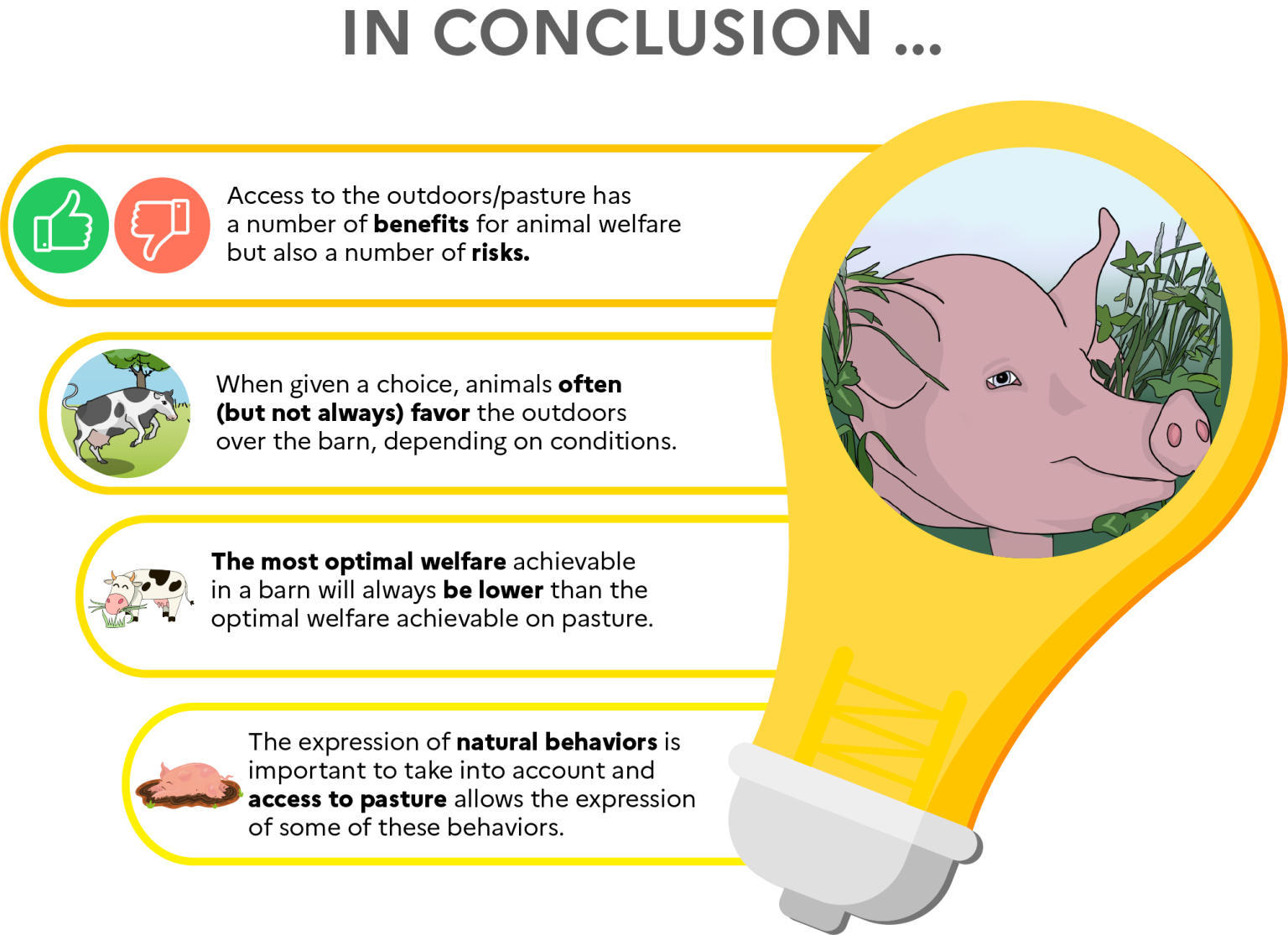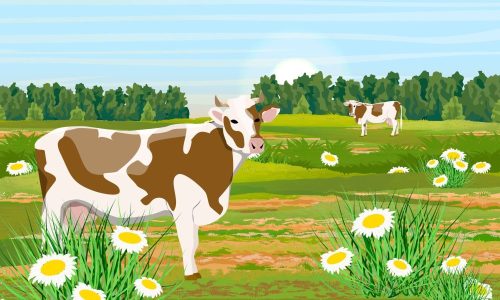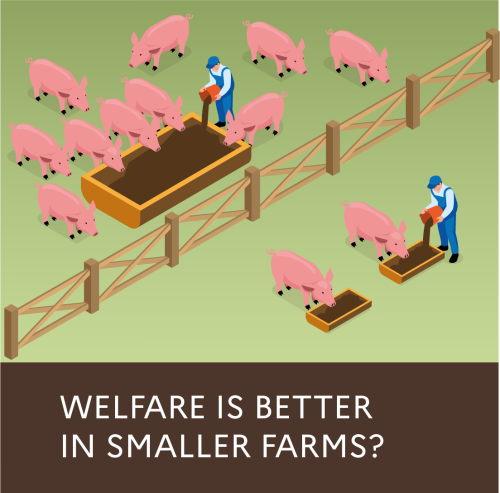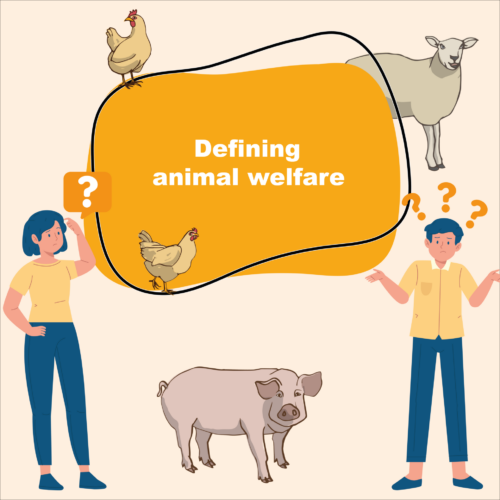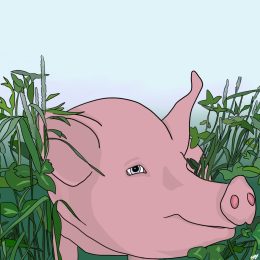

FALSE
Animal welfare on pasture is generally better but not necessarily optimal
keep in mind
- Access to grazing presents benefits for animal welfare, but also risks
- Animals can easily express their natural behaviors while grazing
- Outdoor animals are more prone to heat stress, an imbalance in their diet and diseases caused by parasites
- When given the choice, animals often favor outdoor
Pasture-based livestock farming, i.e., access to a grassy area, is generally perceived by the general public as better from the animal welfare point of view, since it may allow more freedom of movement[1]. Indeed, grazing provides an environment that is considered natural, as well as a greater possibility of expressing species-specific behaviors, when compared to indoor rearing[2].
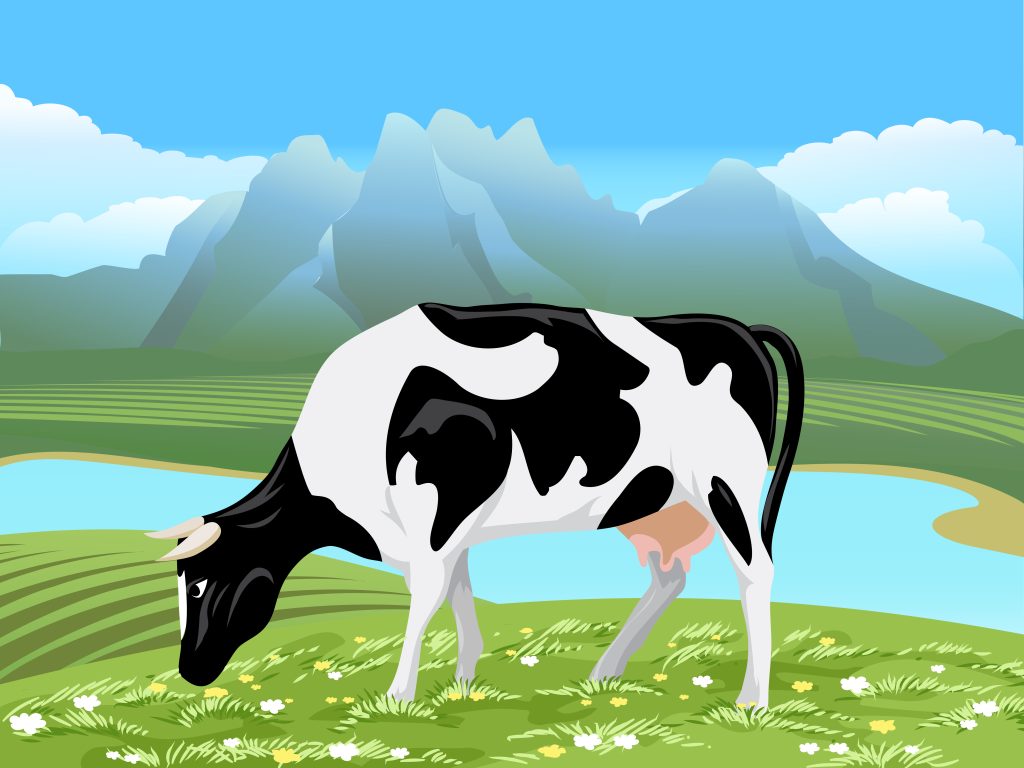
However, the benefits of pasture-based livestock farming depend on the type of outdoor access that is provided and the environmental conditions. Indeed, whether in a building or on pasture, the welfare of animals depends in part on the conditions in which they are kept (available space, sleeping comfort, access to food and water, temperature, etc.). Therefore, there may be cases where indoor animals have a better level of welfare than animals on pasture and vice versa! Furthermore, it should not be forgotten that welfare depends on the perception of each animal and that it must be evaluated in each situation to be sure that it is fulfilled.
However, as we shall see, it can be reasonably argued that an optimal state of welfare is easier to achieve on pasture than in a building – provided certain conditions are met.
Indeed, like indoor livestock farming, grazing presents benefits for the welfare of animals but also a certain number of risks, regardless of the species considered: cows[3], pigs[4], poultry[5] , goats or sheep[6].

Did you know?
Not all pastures are equal!
The benefits of pasture on animal welfare depend on environmental conditions. Pasture paddocks can vary greatly in terms of the quantity and quality of grass available, the amount of shade, animal density, access to shelter, the number of watering points, the availability of scratching posts, etc. All of which directly impacts the welfare of animals.
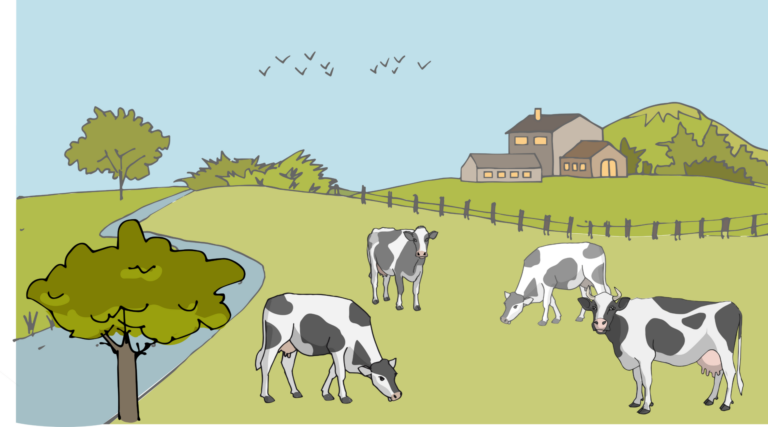
The risks and benefits of grazing with regard to animal welfare
On animal welfare
Access to pasture has multiple advantages for animals in terms of expressing their natural behaviors. For instance, cows on pasture can graze – which is a natural behavior important for their welfare – while they cannot in a barn. Similarly, pigs on pasture can root and graze – behaviors which are not possible indoors. Ground rooting is considered a behavioral need for pigs[7]. A behavioral need is defined as the need to perform a behavior, i.e., the animal is highly motivated to perform that behavior. Prolonged inability to perform that behavior can be detrimental to the animal’s welfare, causing, namely, frustration[8]. In the case of poultry, free range farming allows them to express certain natural behaviors such as scratching the ground, running, flapping their wings, but also the possibility of dust bathing or sunbathing[9].
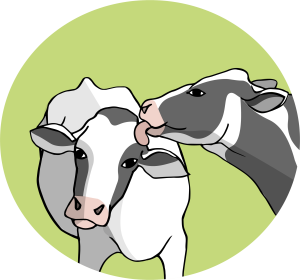
Finally, it has also been shown that animals with access to pasture express less aggression among themselves (e.g. cows[10] and goats[11]). You may want to watch this video, shot at the Terre d’Arjoux organic pig farm, in which two farmers explain that they observe little cannibalism between pigs (tail, ears). Conversely, cannibalism between pigs is often observed in buildings, which sometimes leads farmers to practice tail docking (cutting the tail).
In the same way, when hens are raised with access to the open air, beak trimming (shortening the beak to reduce the risk of “pecking” between birds due to excessive indoor proximity) is not systematically practiced, whereas it is commonly done when hens are raised indoors[12]. This practice is the cause of acute but also chronic pain and has negative consequences on the welfare of animals. The beak is particularly important for the expression of certain behaviors such as feeding, smoothing of feathers and the elimination of certain external parasites[13].
In general, grazing provides a richer and more stimulating environment for animals to express their natural behaviors.

Did you know?
Pigs also graze on grass!
For example, it has been estimated that pregnant sows on pasture eat about 8kg of grass per day. And like cows, pigs prefer certain types of forages: they prefer legumes (e.g. clover) over grasses (e.g. fescue), or fresh grass over hay[14]. However, grass cannot be the only food in their diet since they are omnivores and not herbivores.
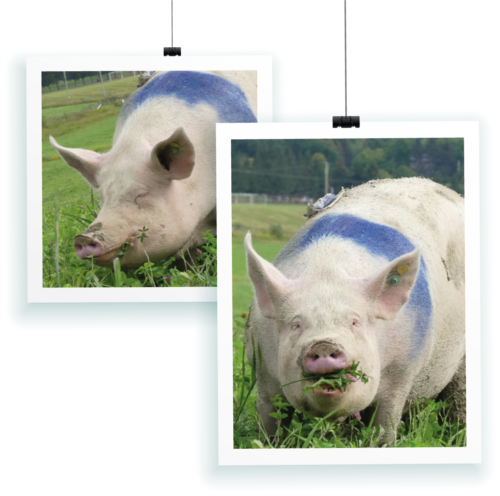
On animal comfort
Pasture offers better lying comfort for cows, and presumably for other animals as well. The lying area is generally better in terms of surface and more comfortable compared to a barn. Access to pasture also gives the animals more freedom of movement.
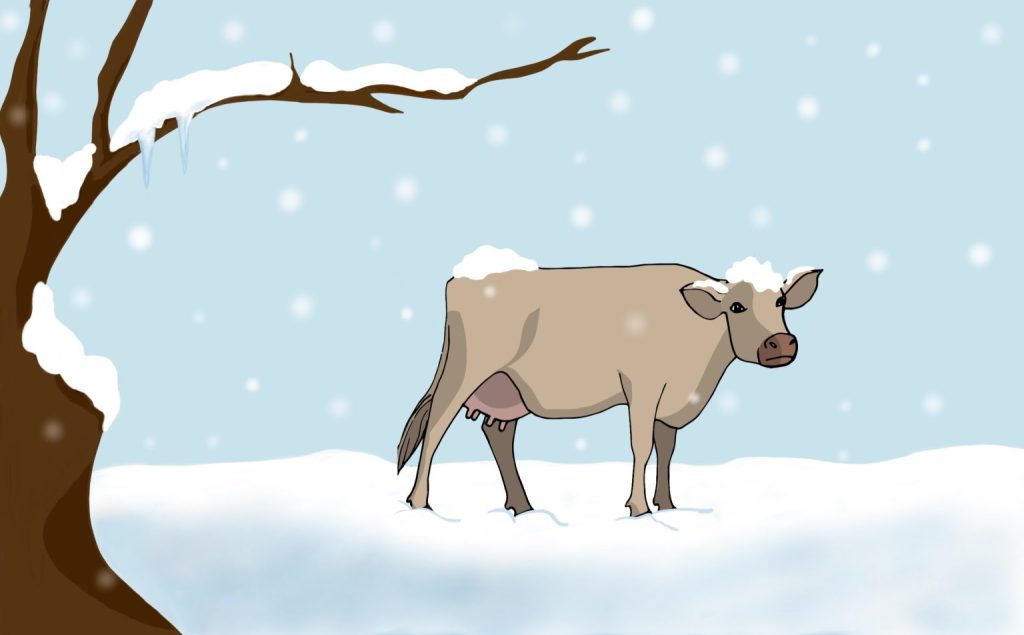
One of the main challenges for animals welfare in a open air is heat stress[15]. Animals can be confronted with temperatures that are outside their comfort zone (too low or too high, depending on the region).
It is important to provide them with shelter from heat, cold and rain, such as hedges, trees, or simply leaving free access to the building. Access to the building should be encouraged, especially during the day when it’s very hot. For example, cows in the winter, tolerate wet cold less than dry cold (see our previous article on this subject)! For pigs more specifically, the possibility to wallow in the mud is essential to regulate their temperature during hot periods. Indeed, it is the preferred mode of thermoregulation for this species. In fact, a study showed that pregnant sows[16], preferred mud holes to shade during hot periods.

Did you know?
Pigs cannot regulate their temperature by sweating. Therefore, in case of high heat, they will do so by adapting their behavior - namely reducing their activity, seeking shade or wallowing in the mud. Indeed, through the process of evaporation, the mud allows to decrease their body temperature. In addition, protect them from getting sunburnt! Access to a mud pit is therefore very important for the welfare of pigs.
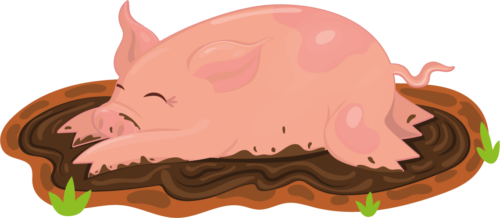
On food
Because of the variation in the quality and quantity of available grass on pasture, adequate feeding exclusively from pasture can be complicated. In particular, there is an increased risk of poor ration balance. For instance, dairy cows – especially those with high milk production – seem to be at greater risk of nutritional deficiencies[17].
In addition, the distances and areas to be covered often make it difficult to carry the water to the various places and to maintain the water points – which can lead to a sub-optimal quantity and quality of available water. Another difficulty may be controlling water temperature. Animals are less likely to drink water that is too hot (pigs[18] and poultry[19]).
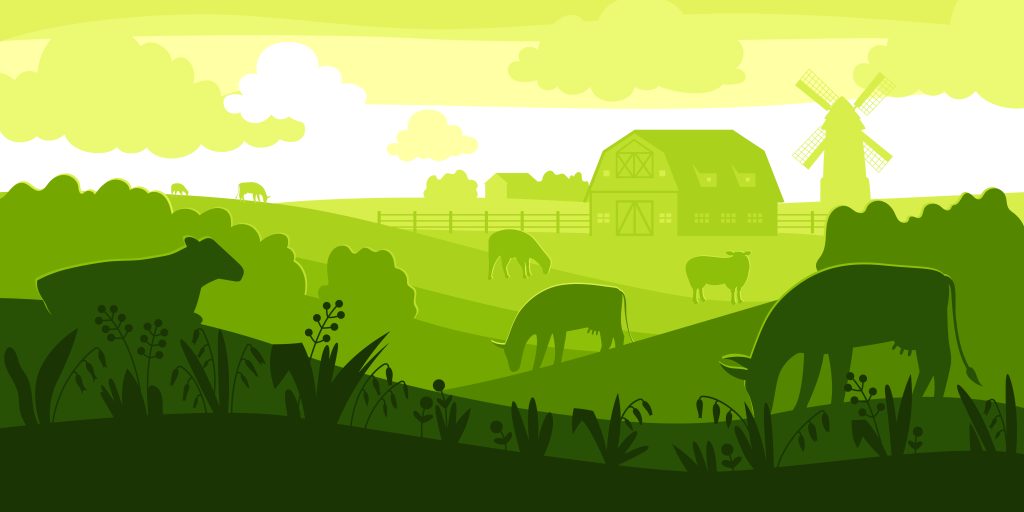
On heath-related aspects
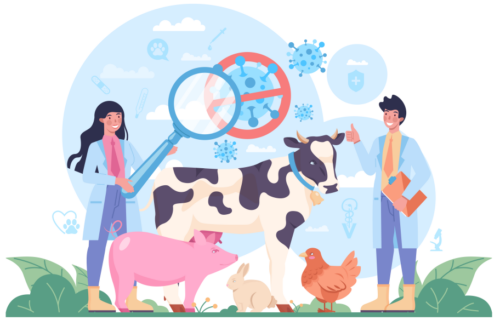
With regard to the benefits, there is generally less lameness, mastitis (inflammation of the udder), lesions, calving problems and mortality in cows on pasture than in indoor housing[23]. There is also less lameness in poultry[24] and pigs[25]. Outdoor rearing reduces disease transmission between animals due to lower density and therefore less proximity between animals[26]. For example, pigs raised outdoors have fewer respiratory problems and fewer intestinal diseases than pigs raised indoors[27]. Similarly, goats with access to pasture have less caseous lymphadenitis (bacterial disease) than goats kept indoors. This is probably due to the closer contact between indoor animals, which facilitates the transmission of diseases[28]. In general, pasture rearing allows one to avoid the risks of poor ventilation in buildings. Indeed, lack of ventilation can promote the transmission of infectious agents by air (pigs[29] and cattle[30]). Poor air quality can also cause respiratory tract irritation due to high levels of gases such as ammonia (pigs and poultry[31]).

Outdoor animals are more prone to infection by internal parasites (e.g. intestinal worms) and external parasites (e.g. ticks) due to the more favorable environmental conditions for the development and survival of parasites[35] and the difficulty of controlling them in the outdoor environment. For example, infection rates for internal parasites (e.g., Ascaris) are generally higher in pigs raised outdoors than in pigs raised indoors[36]. Similarly, outdoor hens are more infested with red mite, an external parasite, than indoor hens[37]. Regarding wildlife transmission, wild boars and rodents are “reservoirs” for many pathogens that can be transmitted to pigs[38]. Poultry are also concerned by possible contamination by wildlife[39].
Finally, it should be noted that outdoor poultry farming may mean higher predation risk. For example, depending on the region, poultry can be threatened by foxes, badgers, martens or even certain birds of prey. According to a study[40], the mortality of poultry due to predation can be higher than 6%.
What if we asked them directly?
Research was conducted to determine whether animals preferred to be kept outdoors or indoors and to test their motivation to go out.
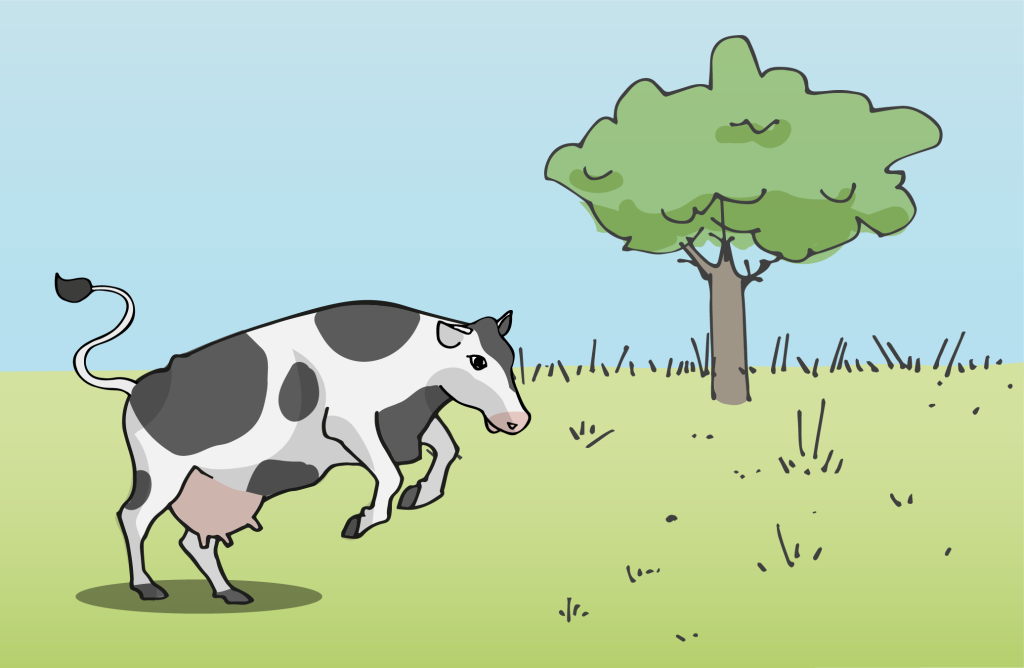
On farms where cows are kept indoors for the winter, when the weather is fine and they reach the pasture, they show positive emotions: it is sometimes referred to as the “cows caracole”.
Motivation to go out
In motivation tests, cows worked (i.e., pushed a weighted gate) at least as much to access pasture as to access adapted food, and even more to go outside in the evening[41]. This indicates an overall high motivation for cows to access the pasture.
Grazing vs indoors?
When given the choice, cows generally spend more time on a grassland than in a building, especially at night[42]. Previous work has shown that dairy cows generally choose to stay indoors during the day, especially when temperatures and humidity are high, but will spend most of their time on pasture at night if they have the occasion[43].
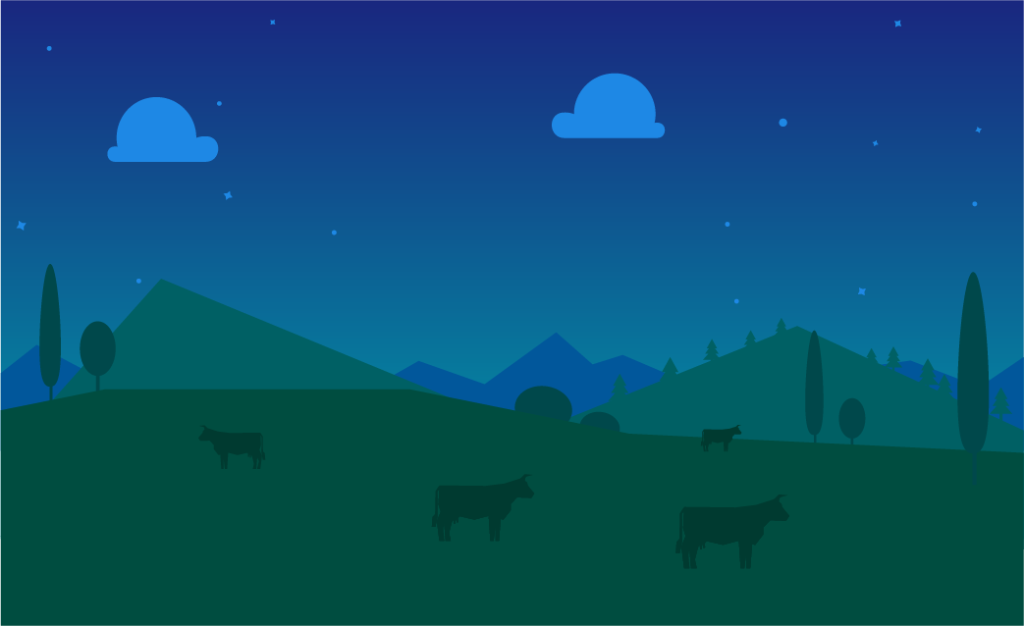
In conclusion
In general, it should be kept in mind that the welfare of animals depends on the environmental conditions and on good pasture management… and that the situation must always be evaluated and adapted!
Study research by Lydiane Aubé, post-doctorant student of Chaire bien-être animal
[1] Fraser, David, Ian J. H. Duncan, Sandra A. Edwards, Temple Grandin, Neville G. Gregory, Vincent Guyonnet, Paul H. Hemsworth, et al. 2013. « General Principles for the Welfare of Animals in Production Systems: The Underlying Science and Its Application ». The Veterinary Journal 198 (1): 19‑27. https://doi.org/10.1016/j.tvjl.2013.06.028 ; Reli̇ć, Renata, Evangelia Sossi̇dou, Anna Dedousi̇, Lidija Peri̇ć, İvana Boži̇čkovi̇ć, et Mirjana Đuki̇ć-Stojči̇ć. 2019. « Behavioral and Health Problems of Poultry Related to Rearing Systems ». Ankara Üniversitesi Veteriner Fakültesi Dergisi 66 (4): 423‑28. https://doi.org/10.33988/auvfd.597496 ; Sossidou, E.N., A. Dal Bosco, H.A. Elson, et C.M.G.A. Fontes. 2011. « Pasture-Based Systems for Poultry Production: Implications and Perspectives ». World’s Poultry Science Journal 67 (1): 47‑58. https://doi.org/10.1017/S0043933911000043
[2] Barnett, J.L., Hemsworth, P.H., Cronin, G.M., Jongman, E.C., Hutson, G.D., 2001. A review of the welfare issues for sows and piglets in relation to housing. Australian journal of agricultural research 52, 1–28
[3] Arnott, G., Ferris, C.P., O’Connell, N.E., 2017. Review: welfare of dairy cows in continuously housed and pasture-based production systems. Animal 11, 261–273. https://doi.org/10.1017/S1751731116001336 ; Mee, J.F., Boyle, L., 2020. Assessing whether dairy cow welfare is ‘better’ in pasture-based than in confinement-based management systems. New Zealand Veterinary Journal 1–24
[4] Delsart, M., Pol, F., Dufour, B., Rose, N., Fablet, C., 2020. Pig farming in alternative systems: strengths and challenges in terms of animal welfare, biosecurity, animal health and pork safety. Agriculture 10, 261 ; Pietrosemoli, S., Tang, C., 2020. Animal Welfare and Production Challenges Associated with Pasture Pig Systems: A Review. Agriculture 10, 223. https://doi.org/10.3390/agriculture10060223
[5] Sossidou, E.N., Bosco, A.D., Castellini, C., Grashorn, M.A., 2015. Effects of pasture management on poultry welfare and meat quality in organic poultry production systems. World’s Poultry Science Journal 71, 375–384. https://doi.org/10.1017/S0043933915000379
[6] Sevi, A., Casamassima, D., Pulina, G., Pazzona, A., 2009. Factors of welfare reduction in dairy sheep and goats. Italian Journal of Animal Science 8, 81–101 ; Tiezzi, F., Tomassone, L., Mancin, G., Cornale, P., Tarantola, M., 2019. The Assessment of Housing Conditions, Management, Animal-Based Measure of Dairy Goats’ Welfare and Its Association with Productive and Reproductive Traits. Animals 9, 893. https://doi.org/10.3390/ani9110893
[7] Horrell, R.I., A’Ness, P.J., Edwards, S.A., Eddison, J.C., 2001. The Use of Nose-Rings in Pigs: Consequences for Rooting, Other Functional Activities, and Welfare. Animal Welfare 10, 3–22
[8] A behavioral need is defined as the need to perform a behavior, i.e., the animal is highly motivated to express that behavior. The prolonged impossibility of expressing this behavior can be detrimental to the animal’s welfare by causing frustration. Voir Friend, T., 1989. Recognizing behavioral needs. Applied Animal Behaviour Science 22, 151–158 ; Jensen, P., Toates, F.M., 1993. Who needs ‘behavioural needs’? Motivational aspects of the needs of animals. Applied animal behaviour science 37, 161–181
[9] Sossidou et al., 2011 ; Lay, D. C., R. M. Fulton, P. Y. Hester, D. M. Karcher, J. B. Kjaer, J. A. Mench, B. A. Mullens, et al. 2011. « Hen Welfare in Different Housing Systems ». Poultry Science 90 (1): 278‑94. https://doi.org/10.3382/ps.2010-00962 ; Reli̇ć et al. 2019
[10] Arnott et al., 2017
[11] Tiezzi et al., 2019
[12] Sossidou et al, 2011 ; Janczak, Andrew M., et Anja B. Riber. 2015. « Review of Rearing-Related Factors Affecting the Welfare of Laying Hens ». Poultry Science 94 (7): 1454‑69. https://doi.org/10.3382/ps/pev123
[13] Janczak et Riber 2015
[14] Aubé, L., 2020. Les fourrages dans l’alimentation des truies en gestation : préférences, performances et comportement alimentaire au pâturage (PhD Thesis). Université Laval, Québec, Canada
[15] Pietrosemoli and Tang, 2020 ; Arnott et al, 2017
[16] Baert, S., Aubé, L., Haley, D.B., Bergeron, R., Devillers, N., 2022. To wallow or nurse: Sows housed outdoors have distinctive approaches to thermoregulation in gestation and lactation. Applied Animal Behaviour Science 248, 105575. https://doi.org/10.1016/j.applanim.2022.105575
[17] Nakajima, N., Yayota, M., 2019. Grazing and cattle health: a nutritional, physiological, and immunological status perspective. Animal Behaviour and Management 55, 143–153 ; Olmos, G., Mee, J.F., Hanlon, A., Patton, J., Murphy, J.J., Boyle, L., 2009. Peripartum health and welfare of Holstein-Friesian cows in a confinement-TMR system compared to a pasture-based system. Animal Welfare 18, 467–476
[18] Delsart et al, 2020
[19] Miao, Z., Glatz, P., Ru, Y., 2005. Free-range Poultry Production – A Review. https://doi.org/10.5713/AJAS.2005.113
[20]Arnott et al., 2017; Mee and Boyle, 2020
[21] Delsart et al., 2020; Pietrosemoli and Tang, 2020
[22] Sevi et al., 2009; Tiezzi et al., 2019
[23] Arnott et al., 2017; Mee and Boyle, 2020
[24] Sossidou el al, 2011
[25] Delsart et al, 2020
[26] Honeyman, M., Weber, L., 1996. Swine system options for Iowa. Iowa State University: Aldo Leopold Center for Sustainable Agriculture Animal Science II [B], May 3–4
[27] Barnett et al., 2001; Salajpal, K., Karolyi, D., Luković, Z., 2013. Sanitary aspects of outdoor farming systems. Acta Agric. Slov. Suppl 4, 109–117; Salajpal et al., 2013
[28] Tiezzi et al., 2019
[29]bDelsart et al, 2020; Park, Hyun-Suk, Byungrok Min, et Sang-Hyon Oh. 2017. « Research Trends in Outdoor Pig Production – A Review ». Asian-Australasian Journal of Animal Sciences 30 (9): 1207‑14. https://doi.org/10.5713/ajas.17.0330
[30] Fraser et al, 2013
[31] Fraser et al, 2013
[32] Honeyman, 1991; Salajpal et al., 2013
[33] Arnott et al., 2017
[34] Sevi et al., 2009
[35] Salajpal et al., 2013
[36] Thamsborg, S.M., Roepstorff, A., Larsen, M., 1999. Integrated and biological control of parasites in organic and conventional production systems. Veterinary parasitology 84, 169–186
[37] Knierim, U., 2006. Animal welfare aspects of outdoor runs for laying hens: a review. NJAS: Wageningen Journal of Life Sciences 54, 133–145. https://doi.org/10.1016/S1573-5214(06)80017-5
[38] Salajpal et al., 2013
[39] Sossidou el al, 2011
[40] Bogosavljević-Bošković, S., S. Rakonjac, V. Dosković, et M. D. Petrović. 2012. « Broiler rearing systems: a review of major fattening results and meat quality traits ». World’s Poultry Science Journal 68 (2): 217‑28. https://doi.org/10.1017/S004393391200027X
[41] Von Keyserlingk, M.A., Cestari, A.A., Franks, B., Fregonesi, J.A., Weary, D.M., 2017. Dairy cows value access to pasture as highly as fresh feed. Scientific reports 7, 44953
[42] Charlton, G.L., Rutter, S.M., East, M., Sinclair, L.A., 2013. The motivation of dairy cows for access to pasture. Journal of Dairy Science 96, 4387–4396.Delsart, M., Pol, F., Dufour, B., Rose, N., Fablet, C., 2020 ; Legrand, A.L., Von Keyserlingk, M.A.G., Weary, D.M., 2009. Preference and usage of pasture versus free-stall housing by lactating dairy cattle. Journal of dairy science 92, 3651–3658
[43] Legrand et al, 2009
keep in mind
- Access to grazing presents benefits for animal welfare, but also risks
- Animals can easily express their natural behaviors while grazing
- Outdoor animals are more prone to heat stress, an imbalance in their diet and diseases caused by parasites
- When given the choice, animals often favor outdoor

On farms where cows are kept indoors for the winter, when the weather is fine and they reach the pasture, they show positive emotions: it is sometimes referred to as the “cows caracole”

LYDIANE AUBÉ, POST-DOCTORANT STUDENT

